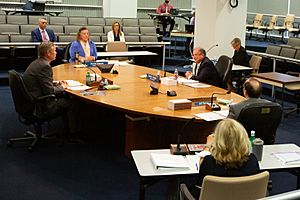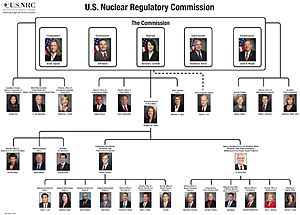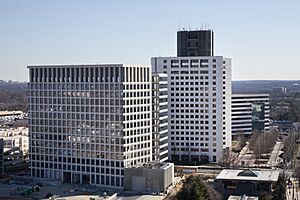Nuclear Regulatory Commission facts for kids
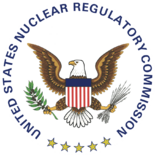 |
|
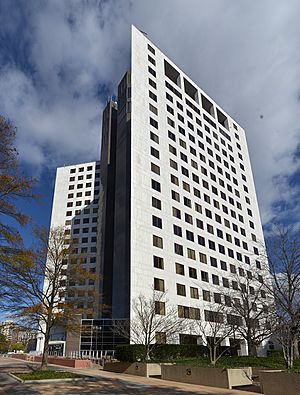 |
|
| Agency overview | |
|---|---|
| Formed | January 19, 1975 |
| Preceding agency | |
| Headquarters | North Bethesda, Maryland |
| Employees | 2,868 (2021) |
| Annual budget | $879 million (2021) |
| Agency executive |
|
The United States Nuclear Regulatory Commission (NRC) is a special agency of the United States government. Its main job is to keep people safe and healthy when it comes to nuclear energy. The NRC also protects the environment.
This agency started on January 19, 1975. It took over some of the work from an older agency called the United States Atomic Energy Commission. The NRC makes sure that nuclear power plants are safe. It also manages how radioactive materials are used and stored. This includes things like nuclear waste.
Contents
History of the NRC
Before 1975, the United States Atomic Energy Commission (AEC) handled everything about nuclear materials. But people felt the AEC was too close to the nuclear industry. They thought it wasn't strict enough.
So, the AEC was closed down. The NRC was created as a new, independent agency. Its job was to oversee nuclear energy and nuclear safety and security. It also looked after how nuclear materials were used in medicine.
In 1975, the AEC's other duties went to a new group. This group was called the Energy Research and Development Administration (ERDA). ERDA was in charge of developing nuclear weapons. Later, in 1977, ERDA became part of the United States Department of Energy (DOE).
After a big nuclear accident in Japan in 2011 (the Fukushima nuclear disaster), the NRC made new safety rules. These rules are called "Diverse and Flexible Coping Strategies" (FLEX). They make sure nuclear power plants can handle extreme events. This includes things like earthquakes or floods. All nuclear power plants in the U.S. now use these FLEX strategies.
The NRC has also published a booklet. It's called A Short History of Nuclear Regulation 1946–2009. This booklet explains important events in the NRC's history.
What the NRC Does and Its Leaders
The NRC works to keep the public safe and secure. It makes sure that civilian nuclear energy and radioactive materials are used safely. This is done through careful rules and checks.
The NRC's work covers three main areas:
- Reactors – This includes large nuclear power plants that make electricity. It also covers smaller reactors used for research and training.
- Materials – This involves how nuclear materials are used in hospitals, factories, and schools. It also covers places that make nuclear fuel.
- Waste – This deals with moving, storing, and getting rid of nuclear materials and waste. It also includes taking nuclear facilities out of service.
The NRC is led by five leaders called commissioners. The president of the United States chooses these commissioners. The United States Senate must approve them. They serve for five years. One commissioner is chosen by the president to be the chairman. The chairman is the main leader of the NRC.
The current chairman is David A. Wright. He became chairman on January 20, 2025.
Current Commissioners
Here are the current commissioners:
| Position | Name | Took office | Term expires |
|---|---|---|---|
| Chair | David A. Wright | August 1, 2025 | June 30, 2030 |
| Member | Bradley Crowell | August 26, 2022 | June 30, 2027 |
| Member | Matthew Marzano | January 8, 2025 | June 30, 2028 |
| Member | vacant | June 30, 2026 | |
| Member | vacant | June 30, 2029 |
Past Chairmen
Here is a list of people who have served as chairman of the NRC:
| Name (chair) | Photo | Term of office | Appointed by | |
|---|---|---|---|---|
| Bill Anders |  |
January 19, 1975 | April 20, 1976 | Gerald Ford |
| Marcus A. Rowden |  |
January 19, 1975 | January 15, 1977 | Gerald Ford |
| Joseph M. Hendrie |  |
March 3, 1977 | December 7, 1979 | Jimmy Carter |
| John F. Ahearne |  |
December 7, 1979 | March 2, 1981 | Jimmy Carter |
| Nunzio J. Palladino |  |
July 1, 1981 | June 30, 1986 | Ronald Reagan |
| Lando W. Zech Jr. |  |
July 1, 1986 | June 3, 1989 | Ronald Reagan |
| Kenneth Monroe Carr |  |
July 1, 1989 | June 30, 1991 | George H.W Bush |
| Ivan Selin |  |
July 1, 1991 | June 30, 1995 | George H.W Bush |
| Shirley Ann Jackson |  |
July 1, 1995 | June 30, 1999 | Bill Clinton |
| Greta Joy Dicus |  |
July 1, 1999 | October 29, 1999 | Bill Clinton |
| Richard Meserve |  |
October 29, 1999 | March 31, 2003 | Bill Clinton |
| Nils J. Diaz |  |
April 1, 2003 | June 30, 2006 | George W. Bush |
| Dale E. Klein |  |
July 1, 2006 | May 13, 2009 | George W. Bush |
| Gregory Jaczko |  |
May 13, 2009 | July 9, 2012 | Barack Obama |
| Allison Macfarlane |  |
July 9, 2012 | December 31, 2014 | Barack Obama |
| Stephen G. Burns |  |
January 1, 2015 | January 23, 2017 | Barack Obama |
| Kristine Svinicki |  |
January 23, 2017 | January 20, 2021 | Donald Trump |
| Christopher T. Hanson |  |
January 20, 2021 | January 20, 2025 | Joe Biden |
| David A. Wright |  |
January 20, 2025 | Present | Donald Trump |
Past Commissioners
Here is a list of people who have served as commissioners of the NRC:
| Portrait | Commissioner | Took office | Left office |
|---|---|---|---|
 |
Marcus A. Rowden | January 19, 1975 | April 20, 1977 |
 |
Edward A. Mason | January 19, 1975 | January 15, 1977 |
 |
Victor Gilinsky | January 19, 1975 | June 30, 1984 |
 |
Richard T. Kennedy | January 19, 1975 | June 30, 1980 |
 |
Joseph Hendrie | August 9, 1977 | June 30, 1981 |
 |
Peter A. Bradford | August 15, 1977 | March 12, 1982 |
 |
John F. Ahearne | July 31, 1978 | June 30, 1983 |
 |
Nunzio J. Palladiono | July 1, 1981 | June 30, 1986 |
 |
Thomas M. Roberts | August 3, 1981 | June 30, 1990 |
 |
James K. Asselstine | May 17, 1982 | June 30, 1987 |
 |
Frederick M. Bernthal | August 4, 1983 | June 30, 1988 |
 |
Lando W. Zech Jr. | July 3, 1984 | June 30, 1989 |
 |
Kenneth Monroe Carr | August 14, 1986 | June 30, 1991 |
 |
Kenneth C. Rogers | August 7, 1987 | June 30, 1997 |
 |
James R. Curtiss | October 20, 1988 | June 30, 1993 |
 |
Forrest J. Remick | December 1, 1989 | June 30, 1994 |
 |
Ivan Selin | July 1, 1991 | June 30, 1995 |
 |
E. Gail de Planque | December 16, 1991 | June 30, 1995 |
 |
Shirley Ann Jackson | May 2, 1995 | June 30, 1999 |
 |
Greta J. Dicus | February 15, 1996 | June 30, 2003 |
 |
Nils J. Diaz | August 23, 1996 | June 30, 2006 |
 |
Edward McGaffigan Jr. | August 28, 1996 | September 2, 2007 |
 |
Jeffrey S. Merrifield | October 23, 1998 | June 30, 2007 |
 |
Richard Meserve | October 29, 1999 | March 31, 2003 |
 |
Gregory Jaczko | January 21, 2005 | July 9, 2012 |
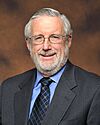 |
Peter B. Lyons | January 25, 2005 | June 30, 2009 |
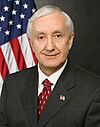 |
Dale E. Klein | July 1, 2006 | March 29, 2010 |
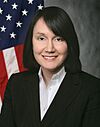 |
Kristine Svinicki | March 28, 2008 | January 20, 2021 |
 |
George Apostolakis | March 29, 2010 | June 30, 2014 |
 |
William D. Magwood IV | March 29, 2010 | August 31, 2014 |
 |
William C. Ostendorff | March 29, 2010 | June 30, 2016 |
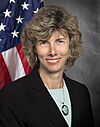 |
Allison Macfarlane | July 9, 2012 | December 31, 2014 |
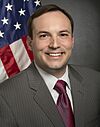 |
Jeff Baran | October 14, 2014 | June 30, 2023 |
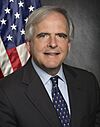 |
Stephen G. Burns | November 4, 2014 | April 30, 2019 |
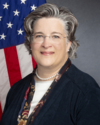 |
Annie Caputo | May 29, 2018 | June 30, 2021 |
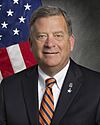 |
David A. Wright | May 30, 2018 | June 30, 2025 |
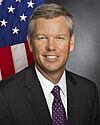 |
Christopher T. Hanson | June 8, 2020 | June 13, 2025 |
 |
Annie Caputo | August 9, 2022 | August 1, 2025 |
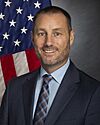 |
Bradley Crowell | August 26, 2022 | Present |
 |
Matthew Marzano | January 8, 2025 | Present |
 |
David A. Wright | August 1, 2025 | Present |
How the NRC is Organized
The NRC has two main parts. One part is the group of five commissioners. The other part is made up of many offices that handle daily operations.
The NRC's main offices are in North Bethesda, Maryland. The agency also has four regional offices across the United States.
NRC Regions
The NRC divides the United States into four main areas, called regions:
- Region I is in King of Prussia, Pennsylvania. It covers the northeastern states.
- Region II is in Atlanta, Georgia. It covers most of the southeastern states.
- Region III is in Lisle, Illinois. It covers the Midwest.
- Region IV is in Arlington, Texas. It covers the western and south central states.
In these regions, the NRC watches over U.S. nuclear reactors. This includes 94 power-producing reactors and 31 research reactors. The NRC has different ways to oversee them. For example, each power plant has inspectors who work there every day. Special inspection teams also visit sites regularly.
Agreement States
Some states have special agreements with the NRC. These "Agreement States" can license and inspect certain nuclear materials themselves. If someone wants to use these materials in an Agreement State, they work with that state's officials. They do not work directly with the NRC.
Keeping Records
The NRC has a library with many documents. In 1984, it started an online system called ADAMS. This system stores public reports, letters, and other technical documents. It helps people find information about the NRC's work.
Training and Safety Checks
The NRC checks on training programs for nuclear plant workers. It also observes meetings of a group called the National Nuclear Accrediting Board. This board helps set standards for training in the nuclear industry.
After the Three Mile Island accident in 1979, the nuclear industry created a group called the Institute of Nuclear Power Operations (INPO). INPO helps set high standards for training and safety. The NRC works with INPO and monitors its activities. This helps make sure that nuclear plant workers are well-trained.
The NRC also has rules about how nuclear power plant operators get their licenses. Companies can now prepare and grade some of their own operator exams. The NRC still approves and oversees these exams. Since 2000, many meetings between the NRC and nuclear companies have been open to the public.
New Nuclear Units
Between 2007 and 2009, many companies wanted to build new nuclear power reactors in the U.S. However, building new nuclear plants became less popular. This was because natural gas became cheaper and more available. Many plans for new reactors were stopped or cancelled.
Some older nuclear reactors have also closed down. For example, Vermont Yankee closed in 2014. Indian Point Energy Center closed in 2021.
However, the NRC has approved extending the licenses for some existing plants. For example, Turkey Point Nuclear Generating Station units 3 and 4 had their licenses extended. This means they can operate for up to 80 years in total. More extensions like this are expected for other reactors. This helps meet energy needs without building many new plants.
See also
 In Spanish: Comisión Reguladora Nuclear de Estados Unidos para niños
In Spanish: Comisión Reguladora Nuclear de Estados Unidos para niños
- International Atomic Energy Agency
- International Nuclear Regulators' Association
- List of canceled nuclear plants in the United States
- Nuclear power in the United States
- Nuclear renaissance in the United States
- Nuclear safety in the United States
- Title 10 of the Code of Federal Regulations
- Atomic Safety and Licensing Board
- ADVANCE Act


